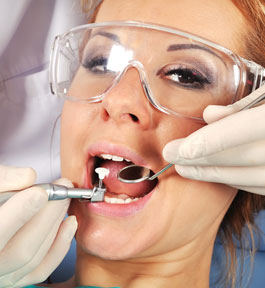Nowadays, dental offices include as part of a routine complete dental exam a primary screening of oral cancer and pharyngeal cancer (head and neck cancer). According to the American Dental Association (www.ada.org), oral cancer occurs two times more commonly in men than it does in women. In the U.S., about eight thousand people die of this cancer each year with the median age of diagnosis at 65 years old. Around 90% of oral cancers are squamous cell carcinomas <www.oralcancerfoundation.org/facts/index.htm>.
The chief difficulty in identifying oral cancer is no signs or symptoms appear in the early stages, which makes it nearly impossible for a person to detect the developing cancer on her own. The earliest signs of oral cancer start as a small area of cells that are white, red, or a mixture of white and red; they are either flat or raised; and they can be completely painless or erupt as painful ulcerative tissues. What’s more, the cells are typically located far back behind the ear or under tongue. In some advanced cases, difficulty swallowing, mouth sores and tongue movement problems may occur.
According to Wikipedia, oral oncogenes (genes with the potential to cause cancer) are triggered by a mutation or change of the DNA. Risk factors that make an individual more susceptible to oral cancer are poor oral hygiene, tobacco use and excessive alcohol consumption. <http://en.wikipedia.org/wiki/Oral_cancer>
However, dentists are specifically trained to spot the earliest signs of oral cancer in their patients. When diagnosed early, treatment is extremely efficient and effective. <http://implantperiocenter.com/periodontal-services/oral-cancer-exam>.






